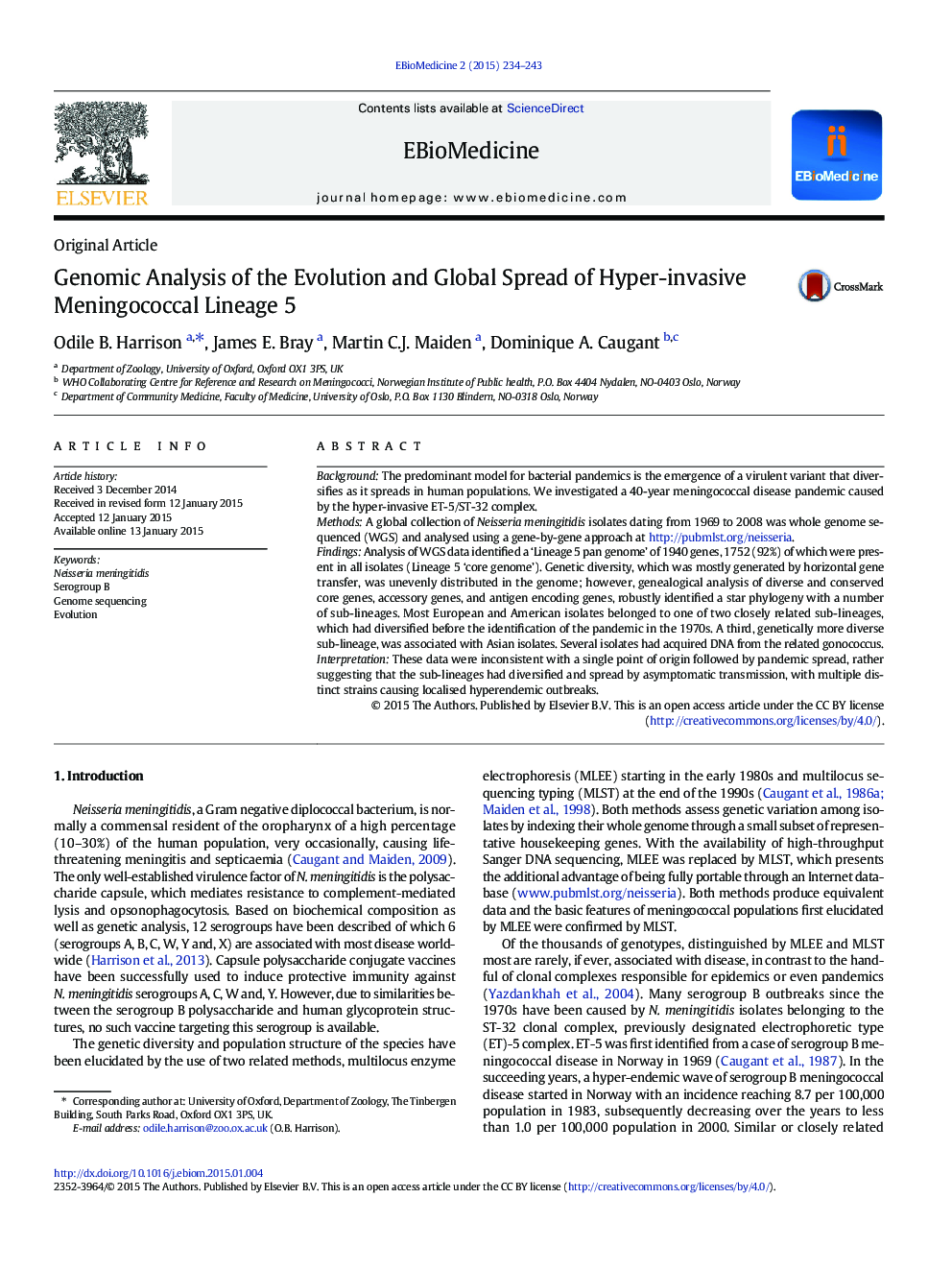| Article ID | Journal | Published Year | Pages | File Type |
|---|---|---|---|---|
| 2121259 | EBioMedicine | 2015 | 10 Pages |
•Genomic analysis of hyper-invasive N. meningitidis lineage 5 distinguishing sub-lineages and localised outbreaks.•Identification of a gonococcal conjugative plasmid consistent with horizontal genetic transfer.•Discovery of a distinct type 4 secretion system previously unidentified in Neisseria.•Gene-by-gene analysis of conserved and diverse loci providing essential tools in serogroup B vaccine development.
BackgroundThe predominant model for bacterial pandemics is the emergence of a virulent variant that diversifies as it spreads in human populations. We investigated a 40-year meningococcal disease pandemic caused by the hyper-invasive ET-5/ST-32 complex.MethodsA global collection of Neisseria meningitidis isolates dating from 1969 to 2008 was whole genome sequenced (WGS) and analysed using a gene-by-gene approach at http://pubmlst.org/neisseria.FindingsAnalysis of WGS data identified a ‘Lineage 5 pan genome’ of 1940 genes, 1752 (92%) of which were present in all isolates (Lineage 5 ‘core genome’). Genetic diversity, which was mostly generated by horizontal gene transfer, was unevenly distributed in the genome; however, genealogical analysis of diverse and conserved core genes, accessory genes, and antigen encoding genes, robustly identified a star phylogeny with a number of sub-lineages. Most European and American isolates belonged to one of two closely related sub-lineages, which had diversified before the identification of the pandemic in the 1970s. A third, genetically more diverse sub-lineage, was associated with Asian isolates. Several isolates had acquired DNA from the related gonococcus.InterpretationThese data were inconsistent with a single point of origin followed by pandemic spread, rather suggesting that the sub-lineages had diversified and spread by asymptomatic transmission, with multiple distinct strains causing localised hyperendemic outbreaks.
